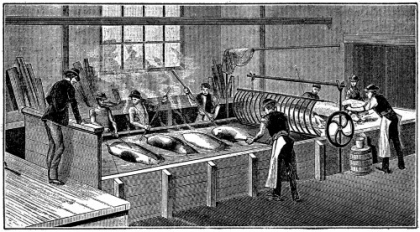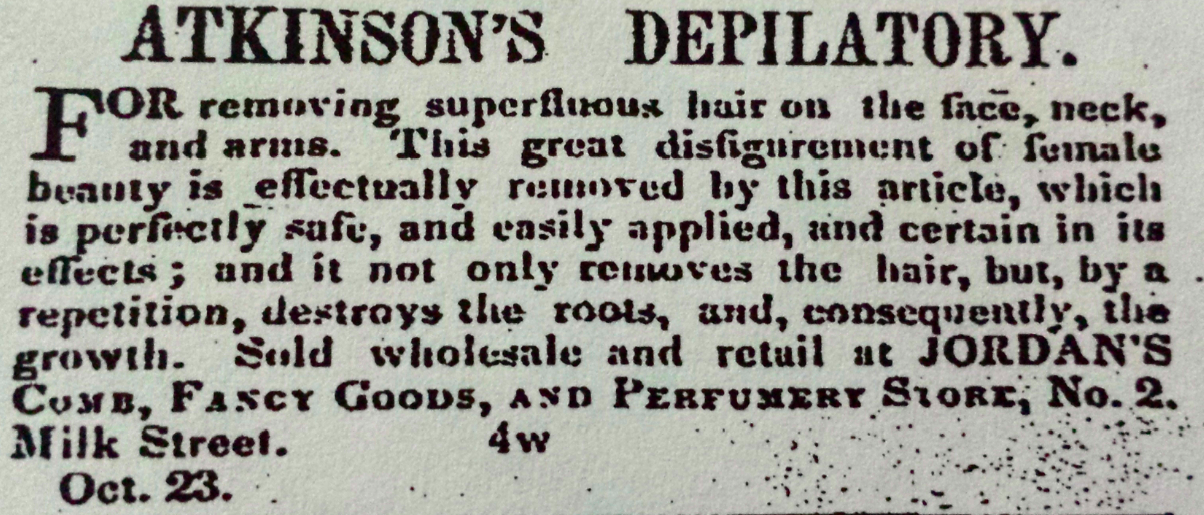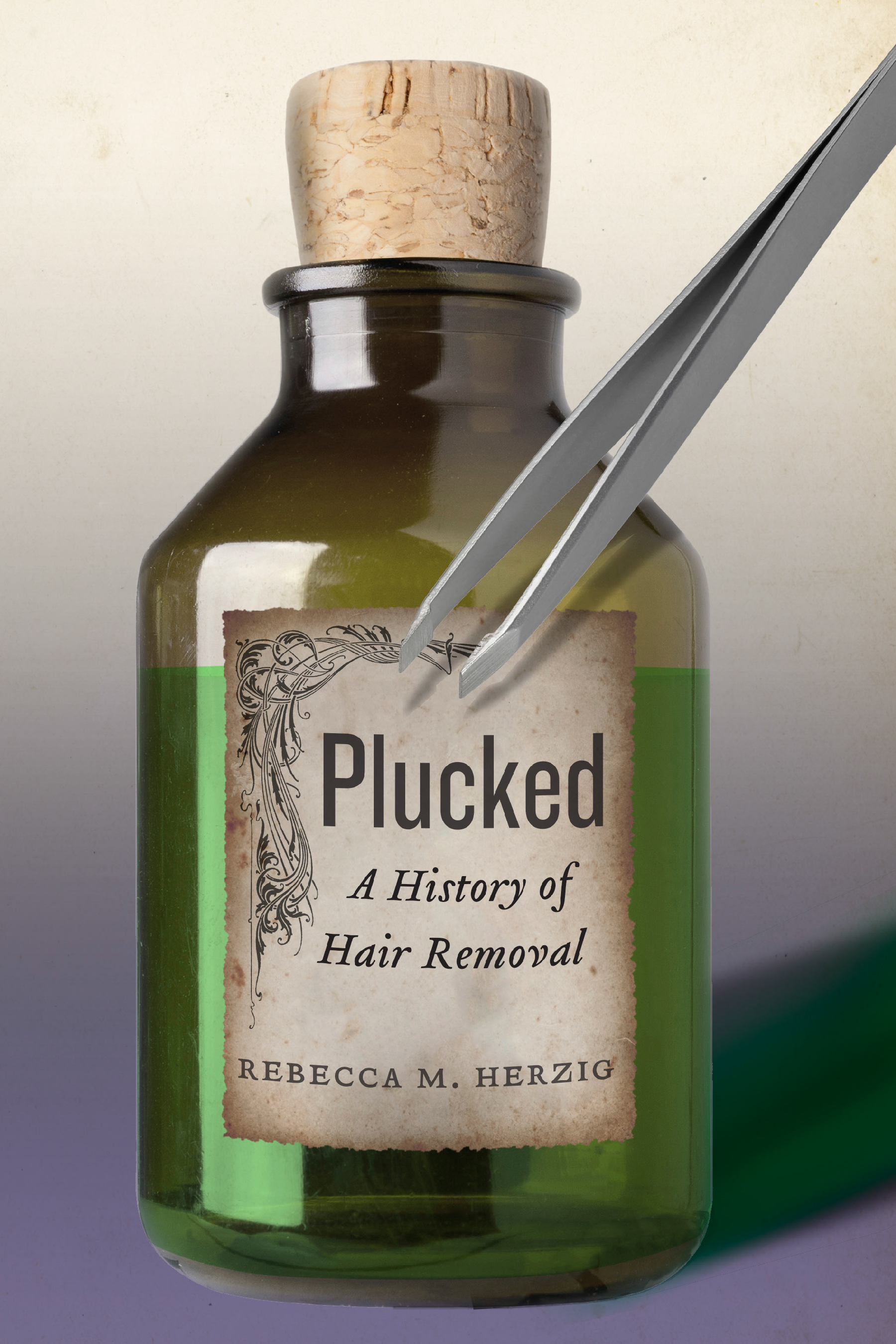By Rebecca Herzig (Guest Contributor)
Prior to the mechanization of meat and leather production in the early nineteenth century, to strip a hide of hair was a gory and laborious process. Skins, covered with soil and blood, would be scrubbed clean of residual animal flesh. Hair was then softened and loosened by soaking the skin in urine, lime, or salt, and then scraped clean—“scudded”—by hand. The skin would then be pounded and kneaded, often with dung used as an emollient, and stretched and dried. Foul-smelling from the combination of urine, feces, and decomposing flesh, tanning operations were generally confined to the outskirts of towns, near moving water where waste could be dumped.

Pig Scalding
The increased rate of animal processing made possible by the advent of the “disassembly” line (a development recounted beautifully in Siegfried Giedion’s classic book, Mechanization Takes Command) prompted the need for faster, less labor-intensive techniques of “unhairing.” Many of the most effective new tools turned out to be chemical: alkalis such as lime (calcium hydroxide) and soda ash (sodium carbonate), and various combinations of sulfides, cyanides, and amines. Although noxious smelling and damaging to adjacent waterways, the novel chemical techniques of unhairing were hugely successful. By 1830, according to one agricultural journal, U.S. production of hides and skin was worth at least $30 million per year—roughly $3.5 million more than the country’s total cotton exports at the time.
The same chemical knowledge that advanced mass animal processing circulated among other early manufacturers, including the antebellum perfumers and druggists who bottled chemical depilatories for human application. As Andrew Ure’s influential industrial dictionary put it, compounds found to remove hair from hogs might equally strip hair from “the human skin,” and vice versa. Another antebellum technical manual, The Art of Perfumery, noted that the same packaged depilatories designed for “ladies” who consider hair on the upper lip “detrimental to beauty” would work equally well for “tanners and fellmongers” preparing hides and skins.
And, as commercial compounds increasingly displaced the homemade hair removers that women had long been making from ordinary kitchen ingredients, purchasers became increasingly unsure about just what they might be putting on their faces. Injuries were not uncommon. In 1804, one Boston weekly reported the case of a “dowager lady” who had rubbed a commercial depilatory around her mouth, removing the hairs yet “taking all the flesh with them.” The depilatory’s systemic effects damaged the woman’s eyes as well, which “obliged her, for some time, to use a black shade.” Other commentators warned about “the utmost risk to health, if not to life” posed by packaged hair removers. “Under all circumstances,” concluded the Journal of Health in 1831, “we believe it to be far better to put up with the deformity arising from the superfluous hair, than to endanger the occurrence of a greater evil by attempting its eradication.”
Although concern about the “evils” of corrosive or toxic depilatories persisted through the nineteenth century, commercial hair removers remained completely unregulated. Even today, debate over cosmetics regulation tends to focus on the health impacts on individual consumers, not on the more extensive ecological and social effects of cosmetics manufacture, distribution, consumption, and disposal. The history of hair removal illuminates some of those effects—the broad, unsettling consequences of seemingly insignificant acts of separating self from other.
 Rebecca M. Herzig is the author of Plucked: A History of Hair Removal (New York University Press). Her previous books include Suffering for Science: Reason and Sacrifice in Modern America and, with Evelynn Hammonds, The Nature of Difference: Sciences of Race from Jefferson to Genomics.
Rebecca M. Herzig is the author of Plucked: A History of Hair Removal (New York University Press). Her previous books include Suffering for Science: Reason and Sacrifice in Modern America and, with Evelynn Hammonds, The Nature of Difference: Sciences of Race from Jefferson to Genomics.
